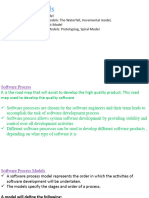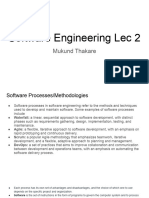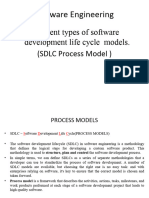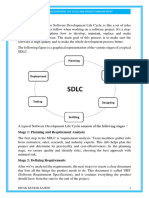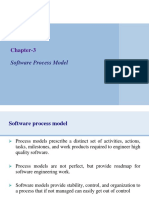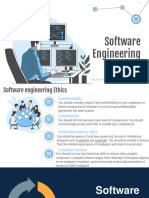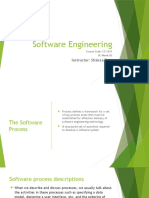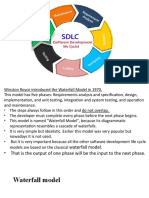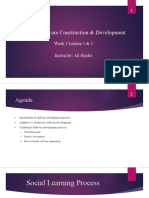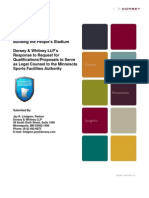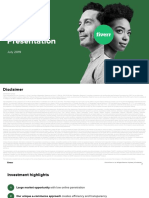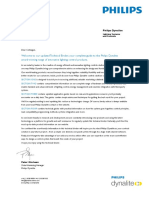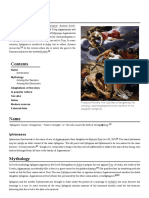0% found this document useful (0 votes)
19 views45 pagesFSeng Chapter 2 - Software Process Models
The document outlines the fundamentals of software engineering, focusing on software process models and the software development lifecycle (SDLC). It describes key characteristics of a process, common activities in software engineering, and various software process models such as Waterfall, Iterative, Incremental, Spiral, and Prototyping. Each model has its advantages and disadvantages, influencing project success based on specific requirements and constraints.
Uploaded by
yero1991girmaCopyright
© © All Rights Reserved
We take content rights seriously. If you suspect this is your content, claim it here.
Available Formats
Download as PDF, TXT or read online on Scribd
0% found this document useful (0 votes)
19 views45 pagesFSeng Chapter 2 - Software Process Models
The document outlines the fundamentals of software engineering, focusing on software process models and the software development lifecycle (SDLC). It describes key characteristics of a process, common activities in software engineering, and various software process models such as Waterfall, Iterative, Incremental, Spiral, and Prototyping. Each model has its advantages and disadvantages, influencing project success based on specific requirements and constraints.
Uploaded by
yero1991girmaCopyright
© © All Rights Reserved
We take content rights seriously. If you suspect this is your content, claim it here.
Available Formats
Download as PDF, TXT or read online on Scribd
/ 45


